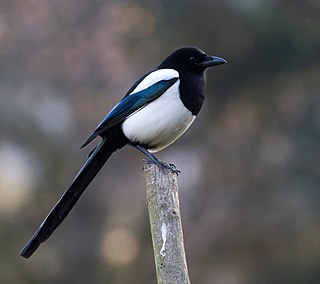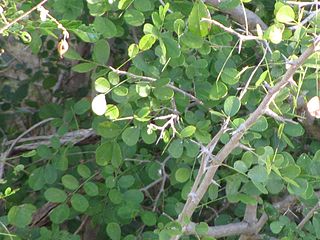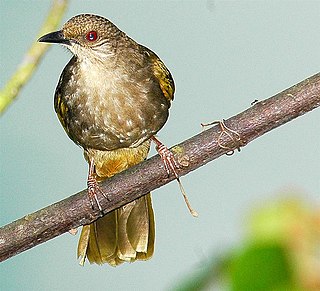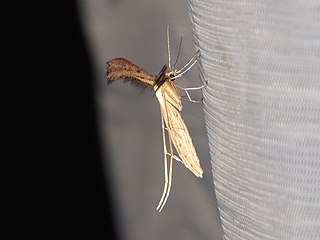
Genus is a taxonomic rank above species and below family as used in the biological classification of living and fossil organisms as well as viruses. In binomial nomenclature, the genus name forms the first part of the binomial species name for each species within the genus.

In taxonomy, binomial nomenclature, also called binary nomenclature, is a formal system of naming species of living things by giving each a name composed of two parts, both of which use Latin grammatical forms, although they can be based on words from other languages. Such a name is called a binomial name, a binomen, binominal name, or a scientific name; more informally it is also historically called a Latin name. In the International Code of Zoological Nomenclature (ICZN), the system is also called binominal nomenclature, with an "n" before the "al" in "binominal", which is not a typographic error, meaning "two-name naming system".

Jasmine is a genus of shrubs and vines in the olive family of Oleaceae. It contains around 200 species native to tropical and warm temperate regions of Eurasia, Africa, and Oceania. Jasmines are widely cultivated for the characteristic fragrance of their flowers. Additionally a number of unrelated species of plants or flowers contain the word "jasmine" in their common names.

Magpies are birds of various species of the family Corvidae. Like other members of their family, they are widely considered to be intelligent creatures. The Eurasian magpie, for instance, is thought to rank among the world's most intelligent creatures, and is one of the few nonmammalian species able to recognize itself in a mirror test. Magpies have shown the ability to make and use tools, imitate human speech, grieve, play games, and work in teams. They are particularly well known for their songs and were once popular as cagebirds. In addition to other members of the genus Pica, corvids considered magpies are in the genera Cissa, Urocissa, and Cyanopica.

Eutheria, also called Pan-Placentalia, is the clade consisting of placental mammals and all therian mammals that are more closely related to placentals than to marsupials.

Tilia is a genus of about 30 species of trees or bushes, native throughout most of the temperate Northern Hemisphere. The tree is known as linden for the European species, and basswood for North American species. In Great Britain and Ireland they are commonly called lime trees, although they are not related to the citrus lime. The genus occurs in Europe and eastern North America, but the greatest species diversity is found in Asia. Under the Cronquist classification system, this genus was placed in the family Tiliaceae, but genetic research summarised by the Angiosperm Phylogeny Group has resulted in the incorporation of this genus, and of most of the previous family, into the Fabaceae.

Mycobacterium is a genus of over 190 species in the phylum Actinomycetota, assigned its own family, Mycobacteriaceae. This genus includes pathogens known to cause serious diseases in mammals, including tuberculosis and leprosy in humans. The Greek prefix myco- means 'fungus', alluding to this genus' mold-like colony surfaces. Since this genus has cell walls with a waxy lipid-rich outer layer containing high concentrations of mycolic acid, acid-fast staining is used to emphasize their resistance to acids, compared to other cell types.

The yellow bittern is a small bittern. It is of Old World origins, breeding in the northern Indian Subcontinent, east to the Russian Far East, Japan and Indonesia. It is mainly resident, but some northern birds migrate short distances. It has been recorded as a vagrant in Alaska and there is a single sighting in Great Britain, from Radipole Lake, Dorset on November 23, 1962 – however, the British Ornithologists' Union has always considered this occurrence to be of uncertain provenance and currently it is not accepted onto the official British List. This species was formerly placed in the genus Ixobrychus.

Dalbergia melanoxylon in french Granadille d'Afrique is a flowering plant in the family Fabaceae, native to seasonally dry regions of Africa from Senegal east to Eritrea, to southern regions of Tanzania to Mozambique and south to the north-eastern parts of South Africa. The tree is an important timber species in its native areas; it is used in the manufacture of musical instruments, sculptures vinyago in Swahili language and fine furnitures. Populations and genomic resources for genetic biodiversity maintenance in parts of its native range are threatened by overharvesting due to poor or absent conservation planning and by the species' low germination rates.

Casuarina, also known as she-oak, Australian pine and native pine, is a genus of flowering plants in the family Casuarinaceae, and is native to Australia, the Indian subcontinent, Southeast Asia, islands of the western Pacific Ocean, and eastern Africa.

The Carangidae are a family of ray-finned fish that includes the jacks, pompanos, jack mackerels, runners, trevallies, and scads. It is the largest of the six families included within the order Carangiformes. Some authorities classify it as the only family within that order but molecular and anatomical studies indicate that there is a close relationship between this family and the five former Perciform families which make up the Carangiformes.

Veronica is the largest genus in the flowering plant family Plantaginaceae, with about 500 species. It was formerly classified in the family Scrophulariaceae. Common names include speedwell, bird's eye, and gypsyweed.

Pycnonotus is a genus of frugivorous passerine birds in the bulbul family Pycnonotidae.

Nebria is a genus of ground beetles native to the Palearctic, the Near East and North Africa. There are more than 500 described species in Nebria.

Chlaenius is a large and diverse genus of ground beetle. It is native to the Palearctic realm, Afrotropical realm, and Nearctic realm. Worldwide, roughly 1,000 species are currently recognized with the majority of known species occurring in the Oriental and Afrotropical regions. The genus is divided into many subgenera.

Byturidae, also known as fruitworms, are small family of cleroid beetles with over 15 described species, primarily distributed in the Holarctic and Southeast Asia. The larvae of at least some genera feed on fruit, such as Byturus, a notable commercial pest of Rubus consuming both the fruit and seeds, while others like Xerasia are associated with catkins. The adults are known to feed on developing leaves, flowers and pollen.

Pterophorinae is a subfamily of moths in the family Pterophoridae.

Carabinae is a subfamily of ground beetles in the family Carabidae, containing ten genera and over fourteen hundred described species. It has two tribes, the Cychrini Laporte (1834) and Carabini Latreille (1802). The latter is divided into two subtribes, the Carabina Latreille (1802) and Ceroglossina Vacher de Lapouge (1927).
Eudromus is a genus in the beetle family Carabidae. There are about six described species in Eudromus, found in Madagascar.

Odacanthini is a tribe of ground beetles in the family Carabidae. There are more than 40 genera and 680 described species in Odacanthini.



















